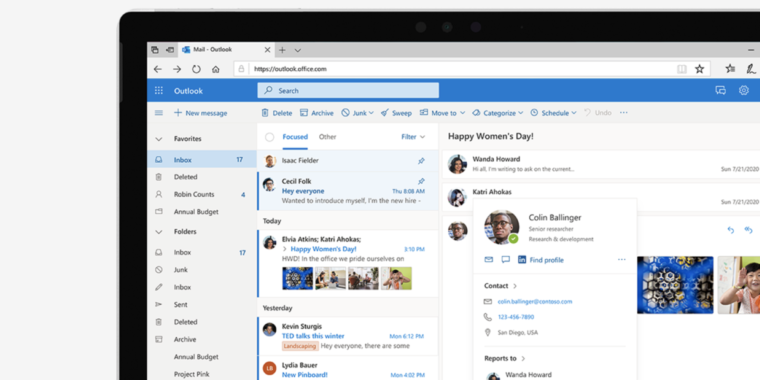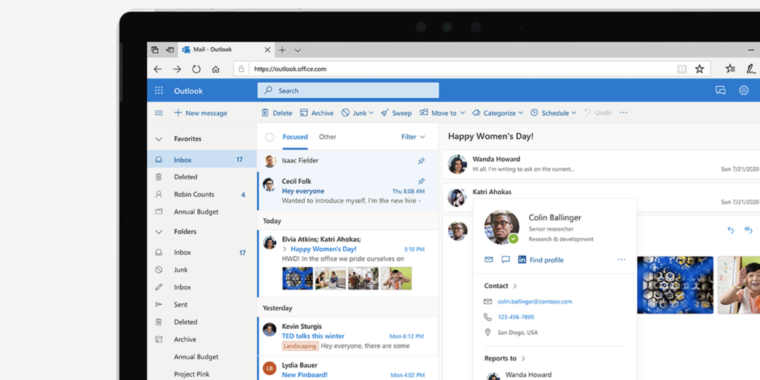
Email Wars —
Predictive text is an iconic Gmail feature—but it’s not all Microsoft has planned.

Enlarge / Microsoft Outlook for the Web.
Microsoft Outlook for the Web has the unenviable task of competing with a dominant Gmail—and much of Gmail’s competitive advantage is thanks to ML-driven features like text prediction. But Microsoft is taking a step to face off directly with one of the features most strongly associated with modern Gmail—text prediction and completion.
In the past week, the company updated its publicly visible roadmap for Microsoft 365 features to include “Outlook on the Web – text predictions.” The feature’s description reads: “Using smart technology, Outlook will predict text while you type. Just use the Tab key to accept the text prediction.” This suggests the feature would work very similarly to the way it does in Gmail.
Microsoft also plans to introduce a “send later” feature for scheduling outgoing emails, the “ability to view and assign categories to tasks,” support for personal calendars that can affect work calendar availability, the ability to RSVP to meetings from the messages list, a mobile Web redesign, an overall redesign of the tasks interface, and a new editor with “capabilities powered by Microsoft 365,” among many other things.
Looking at the roadmap as a whole, the goal is clearly to get much closer to Gmail feature parity—which is many steps away, despite several positives about Web-based Outlook.
Outlook for the Web is part of Microsoft’s Office 365 line of productivity subscription services. The tech giant recently rebranded the family and personal version of Office 365 to Microsoft 365, evoking an Amazon Prime-like model of including much more than just the core traditional offerings. Benefits are still being fleshed out, but they initially include Microsoft Teams for personal use, the new Grammarly-like Editor tool for Word, and perks from partners like Adobe and meditation and mindfulness app Headspace.
Over the past several years, Microsoft has pivoted to a subscriptions model for many of its products. Judging by the most recent quarterly earnings report—which earned high marks from investors—that seems to be working very well for the company’s business for the time being. At least in terms of investor interest, the company has lately had its best run in many years.
Still, competition from Google (and Amazon, for some services) remains fierce. That means a continued arms race of sorts in terms of features, like this predicting text example—and that’s probably a good thing for users of any of these services or tools.









